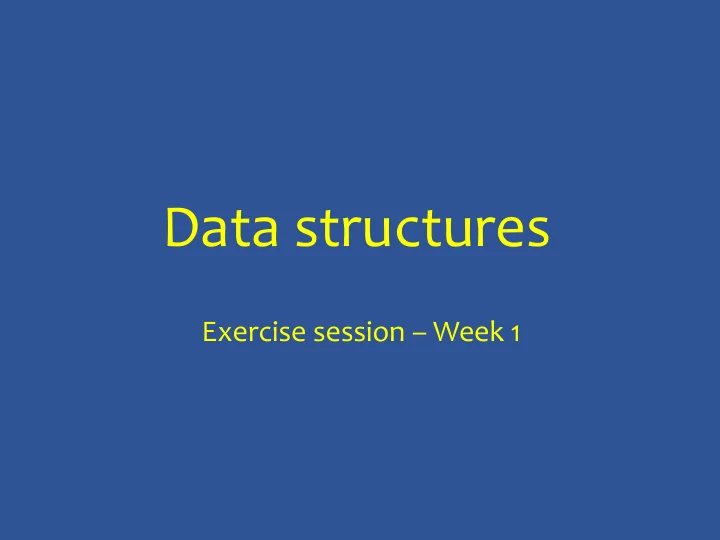

Data structures Exercise session – Week 1
I. Introduction
Two kinds of types in Java • Primitive types int, char, boolean, fmoat, double, etc. • Object types Integer, Character, String, etc.
Java generics Before generics you had to write: reverse(Integer[] arr) reverse(String[] arr) reverse(Float[] arr) … Go Gotcha! ! Now you can write: E must be an object type! reverse(E[] arr)
Two ways to reverse • functional < E > E[] reverse(E[] str) • in-place <E> void reverse(E[] str)
Which way is the better way?
IsPalindrome? Using functional reverse, it’s one line reverse (chars).equals(chars) (where chars is a Character[] )
Time Complexity
How many times does result++ run? fo for (int j = 1; j <= n; j++) result++;
How many times does result++ run? fo for (int i = 1; i <= n; i ++) fo for (int j = 1; j <= n; j++) result++;
Typical growth functions
”Big-O” time complexity A function t(n) is classifjed as O( f(n) ) , for some function f(n) , if there exists some +ve c and n’ , such that t(n) <= c * f(n) when n >= n’
Exercise! Arrange the following functions in order of complexity: n 4 , log n, n log n, 4n, 3n 3 , 5n 2 + n.
How many times does result++ run? fo for (int i = 1; i <= n; i ++) fo for (int j = 1; j <= i; j++) result++;
How many times does result++ run? fo for (int j = 1; j <= n; j *= 2) result++;
How many times does result++ run? fo for (int i = 1; i <= n; i *= 2) fo for (int j = 1; j <= n; j++) result++;
How many times does result++ run? fo for (int i = 1; i <= n; i *= 2) fo for (int j = ; j <= i; j++) result++;
Run times for binary search?! Inpu put s t size n e n Ex Exec ecuti tion ti time me 10 8.9 100 17.2 1000 49.5 10000 52.2 100000 60.1 1000000 70.5 10000000 199.0
Still O(log n)! Why? 10 * log( 10 * log(n), Ex Exec ecuti tion ti time me 33.21 8.9 66.43 17.2 99.65 49.5 132.87 52.2 166.09 60.1 199.31 70.5 232.53 199.0
Reading • Weiss, 1.5.8 - Restrictions on Generics • Weiss, 2 – Algorithm Analysis
Recommend
More recommend